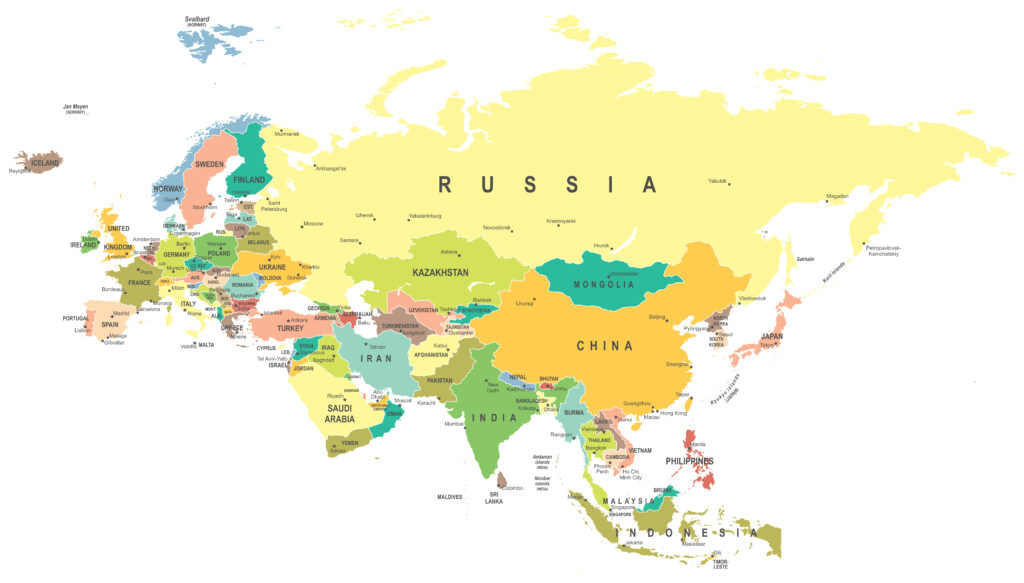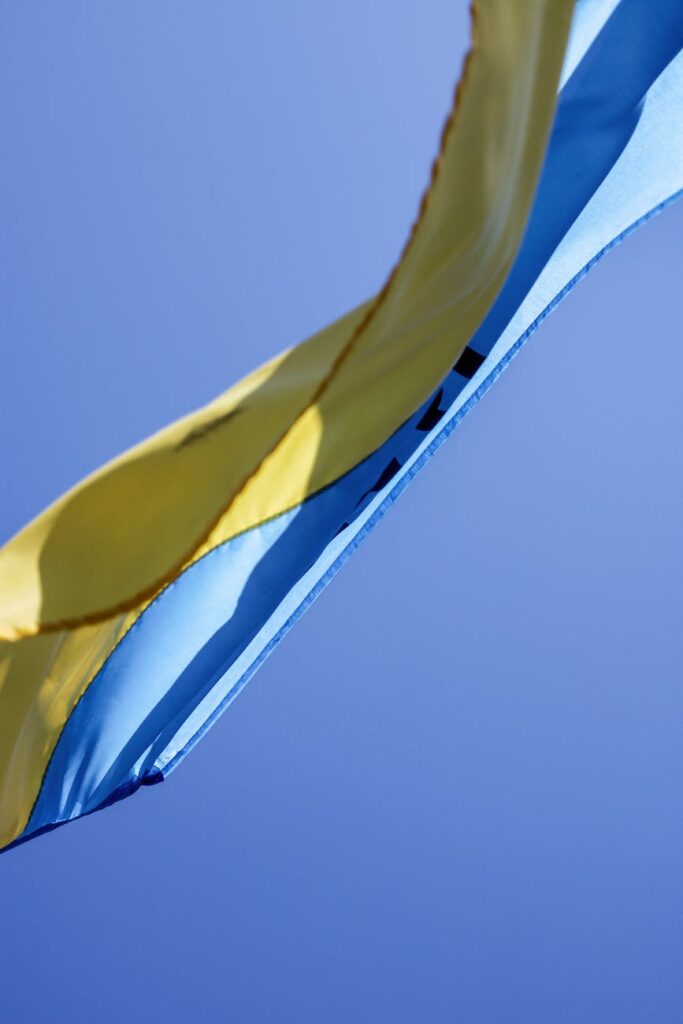
By Gilbert Doctorow, Website, 12/23/23
This past week was quite dull for observers of Russian state television news and talk shows who are looking for dispatches bearing on international events. There was almost nothing about the Houthi (Yemen) attacks on vessels in the Red Sea, about Defense Secretary Austin’s ‘Operation Prosperity’ naval force to secure shipping in the region, about the latest developments of the Israel-Hamas war. The 14.00 and 20.00 Vesti news hours almost exclusively dealt with domestic issues and in particular with the step-by-step validation of Vladimir Putin’s candidacy for the presidential election of March 2024.
You would hardly suspect that there may be other candidates, although online Russian news tickers did mention that the Communist Party, the country’s largest after United Russia, seems to have selected a candidate of its own. Per news.ru, this is Nikolai Kharitonov, a member of the Party’s Central Committee and the chairman of the Committee on the Development of the Far East and Arctic in the State Duma. The seventy-five year old comes from the Novosibirsk region. He holds a doctorate in economics and for several years worked as an agronomist, but then moved to politics. He is one of the longest serving members of the State Duma, to which he was elected from several different constituencies over time, most recently from Krasnodar, center of Russian agriculture in the South. This will be Kharitonov’s second run for the presidency. The first time, in 2004, he garnered 14% of the electorate. It would be safe to say that Kharitonov has no chance whatsoever of being elected president, but he will be a creditable standard bearer who may increase the party’s share of Duma seats.
The second most important bit of local news after Putin’s electoral registration to have received extensive coverage on Russian state television this past week was the official opening of the M12 express highway connecting Moscow and Kazan, some 800 kilometers away. Kazan is the capital of the oil-rich and predominantly Muslim RF region of Tatarstan. It is a showcase for Russia’s outreach to the Arab world and will be the host city for the 2024 BRICS summit in the year of Russia’s presidency of the organization when five Middle Eastern nations take up full membership. Needless to say, the ribbon cutting ceremony, which Putin supervised on a video link, was yet another occasion for him to make a televised speech, one of too many speeches in the past seven days.
The new, ultra-modern highway cuts the travel time by car between the cities in half, from 12 hours down to 6. In the coming year the M12 will be extended to Yekaterinburg and then onward to Tyumen in 2025. The newly opened stretch of the M12 was completed nearly a year ahead of schedule and is another landmark in the infrastructure investment program of the Putin presidency. Given the scale and economic importance of the highways that have been completed in recent years or are under construction, Russia is experiencing something akin to the federal interstate highway project initiated in the United States by then President Eisenhower in 1956.
Otherwise, the biggest component in the daily news has been from the front lines in the Ukraine war. The extensive reporting on the news hours by Russia’s war correspondents details the daily ‘kill’ count of Ukrainian soldiers and destruction of tanks, armored personnel carriers and other heavy equipment at each major point along the 1200 km line of contact where they saw action on that day. Just in the past 24 hours more than 500 Ukrainians were said to be killed or incapacitated. We are told that Russian forces are advancing but that this is to improve their overall position, to even up the line, and should not be confused with some massive offensive which is yet ahead.
Then there were overviews of the fighting provided by Chief of the General Staff Valery Gerasimov and Minister of Defense Shoigu. Gerasimov spoke at his annual briefing to all accredited military attaches of embassies in the Russian capital, including all NATO countries. These attaches were shown on television furiously taking notes or photographing Gerasimov’s slide show. Shoigu spoke to Ministry personnel and made one point worthy of mention: that Russia expects to complete the objectives set out at the start of the Special Military Operation during 2024. Put in simple English, the Ministry officially predicts that the coming year will see the end of the war on Russian terms.
However, as host of the news analysis program Sixty Minutes Yevgeni Popov and as Vladimir Solovyov, presenter of the best known talk show both commented with respect to the optimism coming from the war correspondents and from the top Ministry officials, there is no reason to be cocky and there is still a long road ahead to victory.
Indeed, the Kremlin takes nothing for granted, given its low estimation of the rationality of behavior of the Biden administration. And this brings us to the man I cite in the title of this essay, Deputy Foreign Minister Sergei Ryabkov, who made news yesterday when his interview with Interfax was published. The print version in Russian comes to seven pages and is well worth a close read.
https://www.interfax.ru/interview/937457
Ryabkov is not a name likely to be familiar to readers of these pages. The last time we heard from him was back in December 2021 when he delivered the hard line on Russia’s demand that a new security architecture for Europe be negotiated which would foresee the withdrawal of NATO troops and installations from the countries brought into the alliance after 1996. He was the one who said that if NATO would not pull back then Russia would push it back. It was Ryabkov’s words, not the more diplomatically couched words of Lavrov that hinted at what was to come in February 2022.
Ryabkov has spent most of his 41 years in the Ministry at home in Moscow in various positions as coordinator of foreign relations. From 2002-2005, he was based in Washington, attached to the Russian embassy, where his calling card read ‘emissary counselor.’ His present responsibilities include issues of bilateral relations with the countries of North and South America, nonproliferation and arms control, regulating the Iran nuclear program and the participation of the Russian Federation in BRICS.
The interview covered a variety of subjects that fall within Ryabkov’s mandate, including arms control under present conditions when most of the fundamental treaties on the subject have been cancelled by American initiative and when the single most important document, START II, governing the strategic nuclear arsenals of the signatories, expires in 2026.
However, the single most striking exchange in the interview was picked out by the Interfax editors for use in their title – “Sergei Rybkov: Diplomatic relations with the USA are not a totem to which one has to bow down.”
Quote
Q: With respect to the 90th anniversary of restoration of diplomatic relations between Russia and the USA, the Ministry of Foreign Affairs said that relations between the countries ‘risk being severed at any moment.’ You said earlier that one of the possible red lines can be confiscation of frozen Russian assets. Is this now a line beyond which it will be impossible to maintain the relationship? Are there still other triggers which would be incompatible from our standpoint with continuing the development of relations between the RF and the USA?
A: Essentially Russian-American relations have really fallen into a comatose state, and for this the responsibility lies with Washington, which not only formulated but even doctrinally and conceptually enshrined the erroneous and dangerous attitude of inflicting a strategic defeat on Russia. I cannot exclude the possibility that at some future date, if there is no enlightenment in terms of assessments of what is happening in the world and specifically in Russia and Ukraine, I cannot rule out that in this case Washington will not go beyond the “near-zero” level at which relations are now. That is to say, there can really be an official reduction in the level of diplomatic presence, in Washington and Moscow respectively, or even a complete rupture of relations. This would not be something unexpected for us.
So far, the Americans are wary of destroying everything to the foundation, but they are not ready to negotiate in a fair manner on the basis of mutual respect and consideration of each other’s interests, even in theory. The existing precarious balance in the Russian-American dialog and the fragmentary work on certain extremely narrow subjects, this balance can be broken at any moment due to the recklessness of Washington and specifically of the administration that is currently in power there.
Of course, diplomatic relations in themselves are not a totem to be worshipped or a sacred cow to be cherished by everyone. But we will not take the initiative to break them, to tear them up. It is not in our rules to act in such a way, including based on our understanding that Russia and the United States have a central role in maintaining international security and strategic stability. As for the trigger for a possible round of confrontation with the potential for breaking off relations, the trigger could be asset confiscation, further military escalation, and many other things. I would not go into negative forecasts here. I am just saying all this to make it clear that we are prepared for any scenario, and the United States should not have the illusion, if they have one, that Russia, as they say, is holding on to diplomatic relations with this country for dear life.
Unquote
Severing diplomatic relations is not yet a declaration of war, but in the circumstances in which such a rupture might occur, as sketched by Ryabkov, it could well be the antechamber to a direct, kinetic war between Russia and the USA.
Discussion of the possible confiscation of the frozen Russian assets was a taboo in Washington and Brussels until very recently, not for fear of Russian reaction but for fear of the damage it might do to the dollar as a reliable international store of value. But greater concerns have now arisen that outweigh the taboo, namely the inability of Washington and Brussels to deliver further financial aid to Kiev due to opposition in the U.S. Congress and within the European Institutions. The frozen assets are valued at more than 300 billion dollars and could be made available to Ukraine without legislative approval. From the Russian perspective, Washington is playing with fire.



